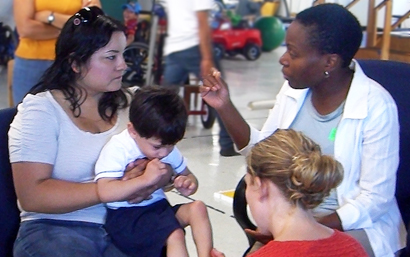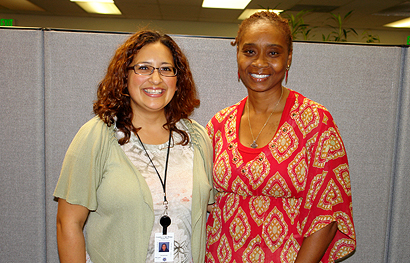Have you heard the old adage “that’s just the way we do things?” When you work for government at any level, many times “the way we do things” is governed by a law or regulation that you have to follow because...well, it’s the law.
But what if you thought of a better way of getting things done. What would you do?
San Diego County has a process for employees to make suggestions for changes to state laws and two different groups of Health and Human Services Agency front-line employees did just that - with great success. Their ideas came from issues that directly affect their jobs and the public they serve. They saw a better way of doing business. Instead of settling for the status quo or getting frustrated, they got creative and passed their ideas up the chain of command.
Each year the Board of Supervisors adopts an annual legislative program that contains ideas for legislative changes that the County will sponsor (or propose). The County’s Office of Strategy and Intergovernmental Affairs coordinates with County departments to explore sponsorship legislation, works with legislators to secure a bill author, and shepherds and manages the bill throughout the entire legislative process.
The two HHSA ideas – one that should result in quicker reporting of elder abuse and another that will decrease interruptions in benefits for aid recipients and save staff time – made that journey through the entire, year-long legislative process and were recently signed into law by California Governor Jerry Brown.
The first piece of legislation, Senate Bill 718, has led to a new California law that will quite literally save lives and get more older adults out of harm’s way quicker.
HHSA’s Aging & Independence Services employees came up with a solution to the long wait times experienced by people trying to report elder abuse. The new law will allow police, doctors, bankers, social workers and other professionals mandated to report suspected elder abuse to issue a report using a secure internet site rather than using the elder abuse hotline shared with the general public.
What was happening, unfortunately, was a convergence of events that crippled the system. A recent state law added bankers to the list of mandated reporters of suspected financial abuse. This added more callers to the elder abuse hotline at a time when the state was making budget cuts to Adult Protective Services.
The result was an over-worked hotline that left callers on hold, sometimes for long periods of time. A study of county calls last year revealed nearly one out of every four callers hung up instead of waiting for an answer.
“The police, doctors and bankers are mandated reporters, required by law to report suspected elder abuse,” said Ellen Schmeding, Assistant Director, Aging & Independence Services. “We wanted to make it as easy as possible for them to make reports. Mandated reporters by and large make the most referrals (as opposed to the public at large).
“By giving them an online option to report abuse, it increases the speed at which we can respond to the most pressing cases.”
The County tried working with the state and then the California Welfare Directors Association to come up with a system, but it just wasn’t possible according to Schmeding. Instead, Aging & Independence Services turned to the CAO’s Office of Strategy and Intergovernmental Affairs to help create change through legislative action.
The County is getting a new computer system for Adult Protective Services and the new secure online elder abuse referral will be built into that system. The general public will continue to use the elder abuse hotline but with mandated reporters using the new online system, wait times for both types of referrals should be reduced significantly.
The second successful legislative proposal came from front-line public assistance workers. Assembly Bill 959 will allow CalWORKS recipients a one-month grace period to address problems and restore discontinued benefits without filling out a new application.
HHSA Director Nick Macchione estimates the change will save an estimated 270 hours of staff time per month and ensure that clients don’t experience an unneeded interruption in benefits.
The fact that two of the County’s legislative priorities have now been signed into law is impressive given the odds. And the workers who took the initiative to verbalize their ideas are applauded for their efforts. The CAO’s Office of Strategy and Intergovernmental Affairs works year-round to make County business more efficient – for staff and customers – through legislative change.
“More than two-thousand bills were introduced in the state Legislature this year, only hundreds of them made it through the process and to the Governor’s desk, and even fewer actually get signed into law,” said Geoff Patnoe, Director of the Office of Strategy and Intergovernmental Affairs. “HHSA’s legislative team, the leadership within Aging & Independence Services and the Agency’s Strategic Office of Planning and Support, County Counsel and our Sacramento lobbyists all share in this success. However, the biggest kudos are for the front-line county employees who had an idea for a legislative change to improve a service and shared it.”
If you have an idea for a legislative change that is needed to make your job better, work with your department and group to contact the Office of Strategy and Intergovernmental Affairs.




